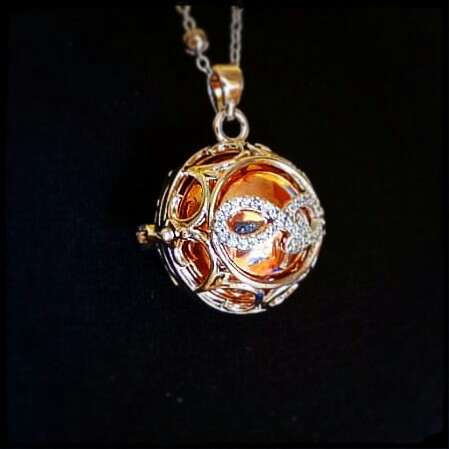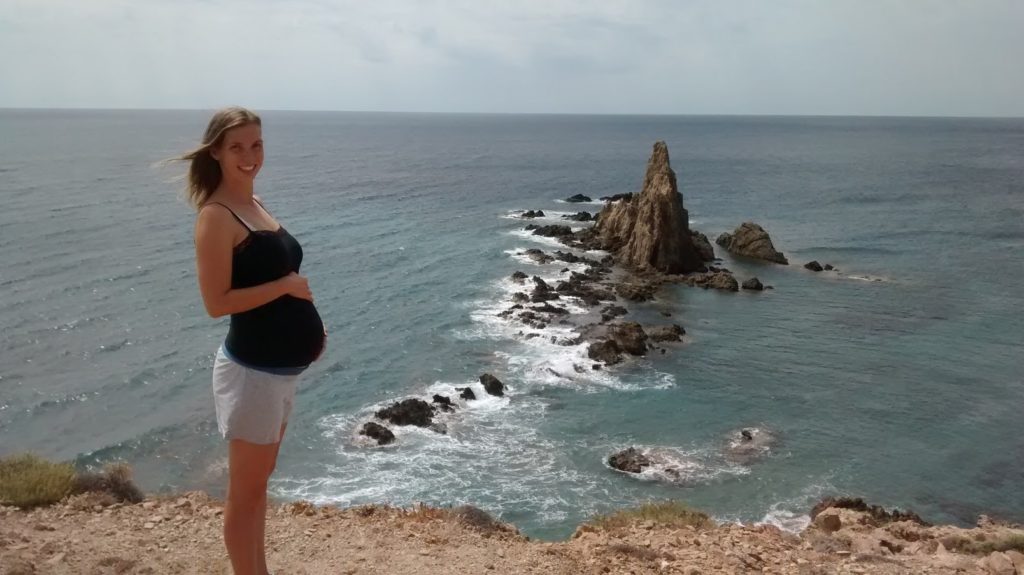Is a Montessori pregnancy different? To tell you the truth, I don’t think there’s that much of a difference. We think it’s important to prepare yourself for giving birth, both physically and emotionally. Read up on where and how you’d like to give birth, what are the options and whether you are happy with these. Learn about the different phases of child development. It’s reassuring to know what you can expect in each phase (this is where this blog will come handy!). Think about the new routine you’d like to follow with your newborn. Plan ahead so that you’ll have everything ready for your baby, just in case s/he’d like to see the world a few days/weeks before than you expect. These are the basics. Read on to learn a few extra tips!
MAKING THE CONNECTION
It’s worth mentioning that, according to Montessori herself, pregnancy is a very important time. It’s essential, not only to establish an emotional connection with the baby but also to lay the foundation of the mother tongue. Nowadays it’s common knowledge that brain development starts in the third trimester (you can read more about it on this website). Therefore it’s essential that we help this process along. We should make sure, that as much as possible, we stay happy and content. A happy mummy results in a well-developing baby. Check with your doctor how to take folic acid and whether there are any other vitamins they suggest you to take.
When you fall pregnant, the idea that a new family member is going to join you might sound very far off. However, as you get more advanced in your pregnancy, you’ll have more opportunities to make contact with your growing foetus.
Even though these aspects are not exclusively part of a Montessori pregnancy, here are a few ideas that you might want to consider helping this process along.
1. Angel Caller (Bola necklace)

According to research (research 1, research 2), a 20-week-old foetus is already able to hear the sounds of the outside world. There’s an ancient tradition originating from Mexico, India and Bali, that women wear a necklace during their pregnancy with a small ball attached to it. In the ball there’s a tiny bell that makes a soft sound. The necklace is worn low, to the belly button, so that the foetus can hear the tingling sound. According to the tradition, the sound not only calms the baby but also calls forth their guardian angel, hence the name.
The role of the bell does not stop here, though. After the birth the necklace can be shortened and can be continued to be worn. As the baby had been hearing it’s sound in the womb, s/he will associate this lovely, soft noise with the womb’s warmth, safety and love.
In our nursery there was a little girl who, when she transitioned from nursery to preschool, wore her Angel Caller around her neck, making it tingle from time to time. I really liked the idea that instead of a comfort toy she used her necklace to help her through these challenging days.
Many people use the necklace as a keepsake. When their baby grows up, becomes pregnant and takes the first steps towards motherhood, they can give the Angel Caller to them, so that the tradition lives from generation to generation.
2. Music and sounds
Research shows (research 3), that from the third trimester the foetus is able to recognise melodies that s/he has heard often. Moreover, it reacts positively when hearing them again after being born (article). This is a great opportunity for the relatives and friends to get in contact with the baby and talk, sing or tell stories to her/him.
Personally, I sang a lot to my baby by the end of my pregnancy. This continued after giving birth as well which meant hours of singing up and down the flat or on the streets behind our building when trying to put him to sleep. This habit is still alive and every night he asks me to sing to him (‘two songs, mummy, one short and one long’). He’s already 3 years old and loves singing to himself while playing. I really hope that the love of music will stay with him for the rest of his life.
3. Belly massage
You can start to feel the movement of the foetus from the 18-20th week (in case of your first baby). In the last trimester you can even have a ‘conversation’. When you feel that the baby is moving, gently massage your tummy. The baby might kick back!
You probably noticed that pregnant women unconsciously touch their bellies. Research (research 5) confirms that the foetus moves its arms, head and mouth when the mum strokes the bump. This means then that you’re welcome to gently massage your tummy, thus stimulating the baby. If you feel that the baby is moving away from your touch, you’ll know that at that moment it prefers to be left alone.
Throughout the day there are a plethora of things that demand your attention. Sometimes you even forget about the growing little baby inside you! But when the evening comes and life calms down around you, try to ‘listen’ inside and only focus on the connection. This is the perfect moment to do a little massage to strengthen your early relationship.
I remember, these little movements inside me always relaxed me a bit.They reassured me that the baby is safe and progressing well. They also helped me to make my pregnancy a reality and start thinking of my baby as a real, living little person on its own right.
4. Books
If you feel inclined and have time for it, it’s worth reading about how Montessori saw pregnancy itself and what she thought of newborns. The most famous and most important of her books is ‘The Absorbent Mind‘. The Montessori book that is closest to a ‘Montessori baby book’ was written not by Maria but by her son, Montario, called ‘Understanding the Human Being’.
Other book recommendations on the subject:
The Montessori Baby – Simone Davies
Why love Matters – Sue Gerhardt
The Joyful Child – Montessori, Global Wisdom for Birth to Three
How to raise an amazing child the Montessori way – Tim Seldin
Montessori from the Start: The child at home, from birth to Age 3
Finally, not Montessori-related but still a personal favourite:
John Medina: Brain rules for Baby: How to raise a smart and happy Child from zero to five
FINAL THOUGHTS
In my opinion there is no such a thing as a Montessori pregnancy. We are all in this together. For many mothers these nine months might feel like a journey. As the bump grows, more and more of your thoughts will turn towards the baby. Be prepared that your emotions will get stronger, too. It was incredible to finally meet my little boy after giving birth! Although I also remember, that in the following days sometimes I felt a bit alone, as I didn’t have to share my body with anybody else. When this feeling came to me I only had to look at D to feel better again.

If you’d like to read about how to prepare the rest of the family to the arrival of the new life, click on the next post.
Do you have any other tips on how to make these early connections with the foetus?
